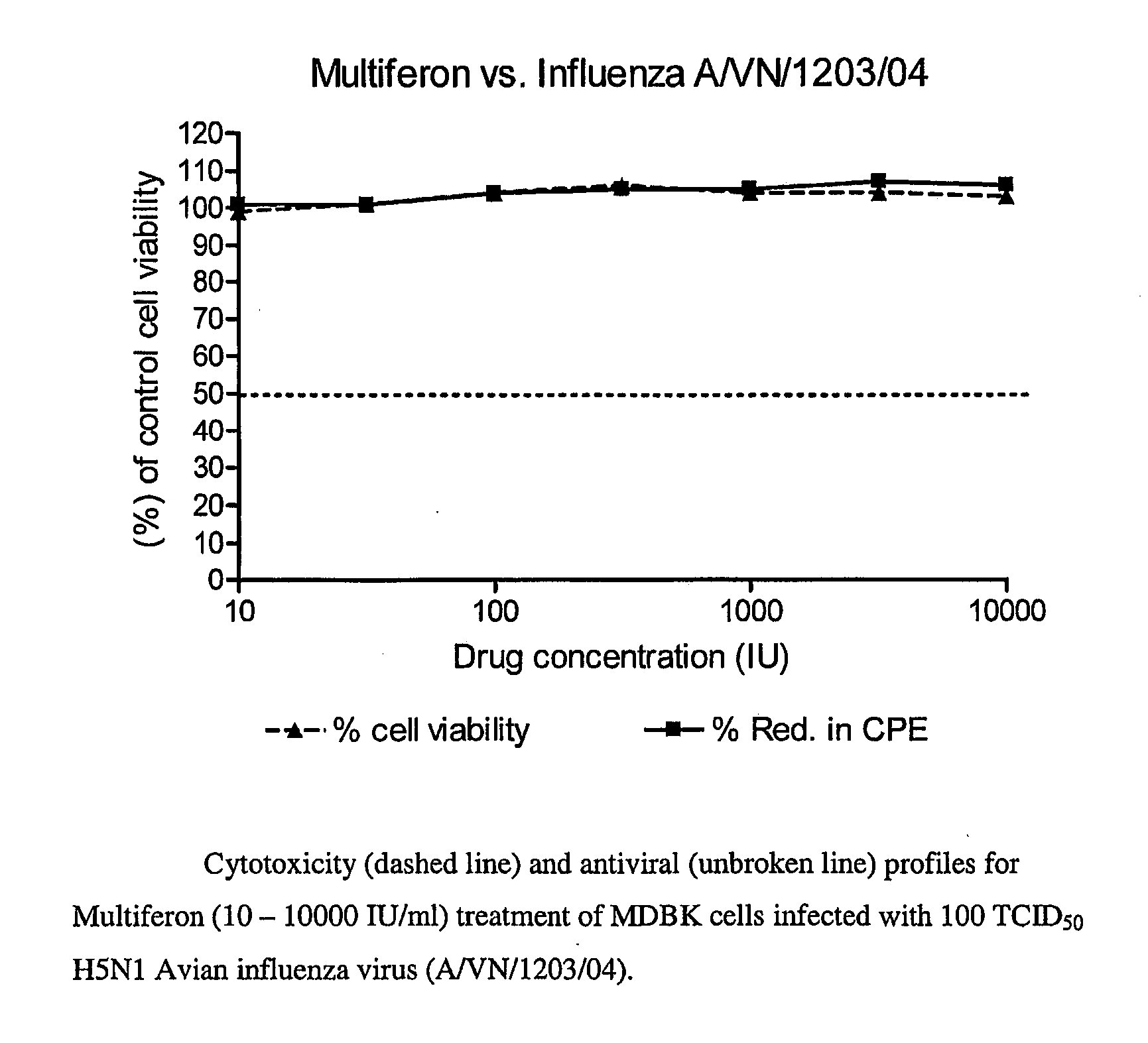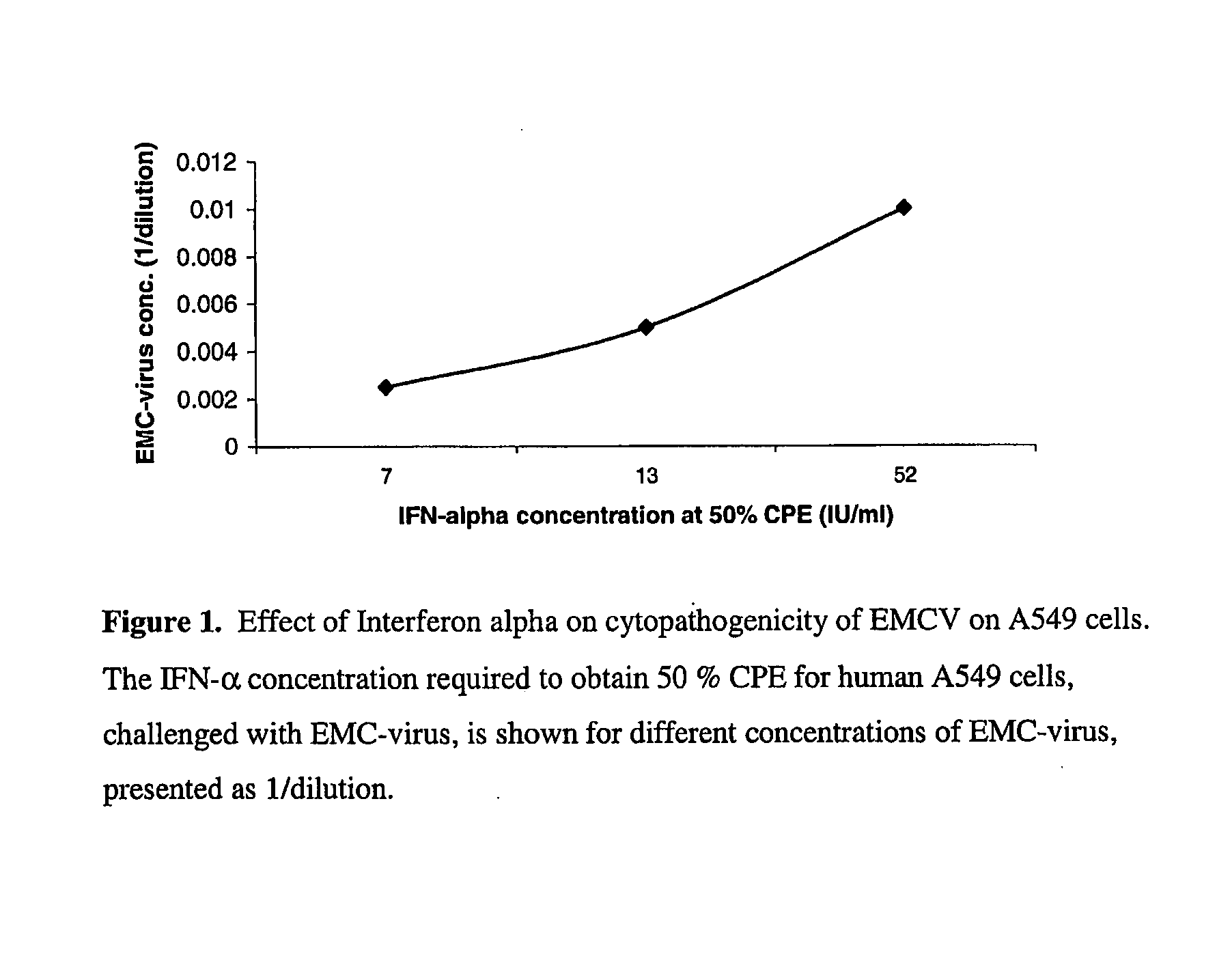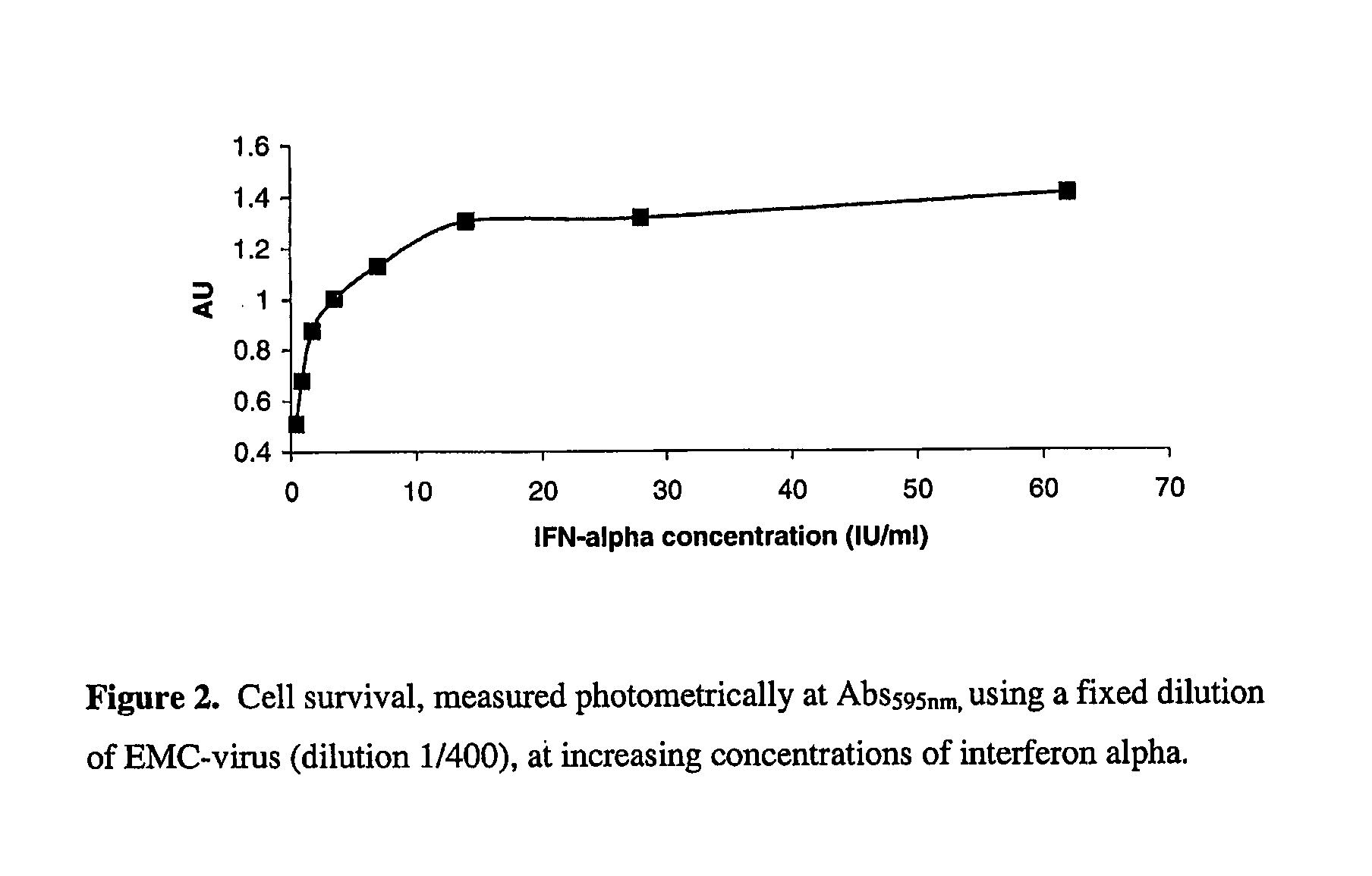Method and Use of Interferon Compositions For the Treatment of Avian Influenza
- Summary
- Abstract
- Description
- Claims
- Application Information
AI Technical Summary
Benefits of technology
Problems solved by technology
Method used
Image
Examples
example 1
Anti-Viral Effect of Multi-Subtype Interferon in Human Cells
[0130]Interferons are widely known to be species specific as the target for the interferon is the infected cell rather than the virus itself.
Cytopathic Endpoint Assay
[0131]The effect of each anti-viral treatment will be tested in quadruplicate. Briefly, 100 microlitres of serial 10-fold dilutions of each treatment was incubated with 100 microlitres of cells to give a final cell count of 20,000 cells per well in a 96-well plate. Incubation at 37° C. in 5% CO2 was carried out overnight for the interferon preparations and for one hour for Ribavirin™. 10 microlitres of virus at a concentration of 10,000 pfu / well was then added to each test well. The plates were then incubated at 37° C. in 5% CO2 for three days, with the plates being observed daily for cytopathic effects. The end point is the diluted concentration that inhibited the cytopathic effect in all four set-ups by 50%.
[0132]To determine cytotoxicity, 100 microlitres of ...
example 2
Antiviral (Anti-Influenza) and Toxicity Assays
Materials and Methods:
[0137]Madin Darby bovine kidney (MDBK) cells were used to test the efficacy of compounds to H5N1 Avian influenza virus (H5N1; strain A / VN / 1203 / 04). The antiviral evaluation assay examined the effects of compounds at seven half-log concentrations each. Recombinant human interferon alpha 2a and recombinant human interferon beta 1a (PBL Biomedical Laboratories, Piscataway, N.J.) as well as Ribavirin™ (MP Biomedicals, Irvine, Calif.) were included in each run as positive control compounds. Multiferon and controls were run in duplicate assays in triplicate for H5N1 as well as duplicate toxicity wells.
[0138]Subconfluent cultures of MDBK cells were plated out into 96-well plates for the analysis of cell numbers (cytotoxicity) or antiviral activity (CPE) and the next day drugs were added to the appropriate wells. One hundred 50% tissue culture infectious doses (TCID50) of H5N1 or media were added to appropriate wells and ce...
PUM
| Property | Measurement | Unit |
|---|---|---|
| Fraction | aaaaa | aaaaa |
| Fraction | aaaaa | aaaaa |
| Fraction | aaaaa | aaaaa |
Abstract
Description
Claims
Application Information
 Login to View More
Login to View More - R&D
- Intellectual Property
- Life Sciences
- Materials
- Tech Scout
- Unparalleled Data Quality
- Higher Quality Content
- 60% Fewer Hallucinations
Browse by: Latest US Patents, China's latest patents, Technical Efficacy Thesaurus, Application Domain, Technology Topic, Popular Technical Reports.
© 2025 PatSnap. All rights reserved.Legal|Privacy policy|Modern Slavery Act Transparency Statement|Sitemap|About US| Contact US: help@patsnap.com



